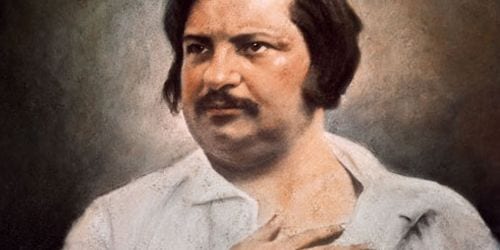
‘Tell me where you eat, what you eat, and at what time you eat, and I will tell you who you are.’
— Balzac’s Omelette , with a nod to Brillat-Savarin, of course.
Have you ever had that experience in a French restaurant when you are completely baffled by the menu? Well, don’t feel too bad about it – so have the French. There was a time when restaurants did not exist – hard to believe. Muhlstein has it that their origins lie in post-Revolutionary France – when the members of the new Assembly had to be catered for during the trials of the Reign of Terror.
They were pre-occupied with this, understandably, and kept unsociable hours. When they came out into the Paris streets vendors and cooks had to offer more than the usual taverns and stalls for refreshments. A new sit-down dining experience was developed, and this is what Honoré de Balzac would use in his masterpiece novel cycle of The Human Comedy in the 19th century. For a time customers were unsure what to do and many of them were not sufficiently literate to read the menu.
What at first glance seems to be a frivolous little book – charmingly designed with its quirky yellow cover; a little bit of 19th century retro popular publishing (scandalous novels in France at the time were known in the vernacular as ‘yellowbacks’) – turns out to be an absorbing read. Balzac is the key of course. Muhlstein demonstrates beautifully how he depicted the inexperienced, the youthful, the innocents up from the country attempting to navigate Parisian society through the dining (or lack of it) experience. A character’s ability to decipher a Parisian restaurant menu becomes a signal of their relative success in society and what future might lie in store for them. Desire, hunger, rage, envy are knitted together by him into his complex web of humanity and Normandy hams, Provençal stews, and Ostend oysters punctuate the experiences. Appetites take many forms.
Parallel to the sustenance in the lives of his creations: Goriot, Cousin Betty, Eugénie Grandet, et al came Balzac’s own appetites. When writing he existed on a diet of fruit (he was obsessed with Comice pears) and the occasional light meal, but mostly he drank coffee, by the ‘bucketful’. He was concerned with finding the best blend of beans and scoured Paris for the right combination from a range of suppliers. He also kept pace with the developing technology for brewing the perfect cup, bemoaning the ‘country’ habit of boiling the coffee. The photograph of the type of 19th century percolator he used is fascinating and looks like a must-have on any gift-list.
His type of diet, however, was not useful for good health or a trim waistline. Once a manuscript was completed and sent to the publishers he would go on an all-out binge. He began with 100 (that’s 100!) oysters, washed down with four bottles of white wine; then went on to a dozen lamb cutlets, duckling with turnips, a brace of roast partridge, a Normandy sole – all accompanied by vegetables and more wine and followed by dessert and piles of pears and grapes. He would then (and we can all sympathise with this) send the bill to his publisher!
He did not consider himself a glutton that was one who ate without discrimination. His brand of dining led to the ample figure that Rodin’s scandalous sculptural depictions of him show: rotund, nude, arms defiantly folded or his robe flapping open – the embodiment of human appetite and satire. His professional life, Muhlstein recounts, caused him to follow this starve and binge cycle of eating habits; obsessive yoyo dieting it would be called now.
As Paris and French cuisine at large began to become more of an art and the number of professional cooks burgeoned into a population of trained chefs, Balzac’s work reflected this. Where, when, what and how one ate became increasingly important and he was there to record the significance this held with one’s social standing and perhaps more crucially one’s social aspirations. To be too conscious of the repast was deemed to be vulgar, to be completely unconscious of the importance of how and what to eat, equally so. Fashion trapped people into that terrible dilemma that remains constant today. Muhlstein summarises it wittily: ‘Tell me where you eat, what you eat, and at what time you eat, and I will tell you who you are.’
